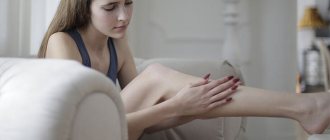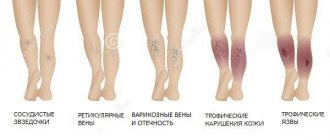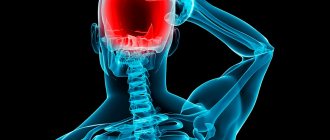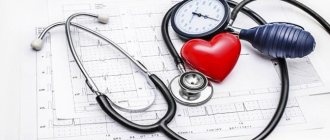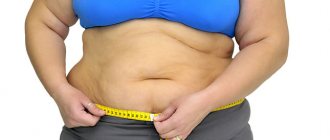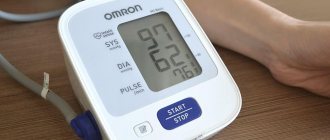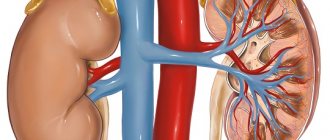Pyotr Dmitrievich Puzdryak
cardiovascular surgeon, 1st category doctor
Publication date: 03/26/2021
If you have been diagnosed with varicose veins in the legs, your doctor will probably advise you to move more: get up more often to stretch, walk and perform special therapeutic exercises. However, not all exercises are suitable for varicose veins. We tell you what to do to improve the condition of your veins, and what activities it is recommended to avoid.
Effective exercises in the treatment of varicose veins
Getting rid of existing varicose veins is not so easy. Treatment may include both taking venotonics and surgery. Physical therapy may also help you. Ask your doctor which exercise routine is best for you. In addition to special methods that are used under the supervision of a specialist, there are exercises that you can perform independently.
We list effective and simple exercises that are suitable for both the prevention and treatment of varicose veins.
Walking _ Walking for at least 30 minutes a day promotes good health. Muscle contraction pushes blood upward.
Swimming . If you are a beginner, you can start with a combination of 30 seconds of activity and 30 seconds of rest, gradually increasing the time. Water aerobics is also useful.
A ride on the bicycle . Cycling trains the calf muscles. Watch your posture and how long you ride your bike. The loads should not be too heavy.
Exercise "bicycle" . This simple exercise should be performed while lying on your back. Raise your legs up, imagine that you are riding a bicycle and turning the “pedals”.
Raising legs at right angles . Lie down on the floor or bed. Raise your legs up and lean them against the wall. Stay in this position for a couple of minutes. The exercise can be done several times a day.
Alternating leg raises . Lie on your back with your legs extended. Slowly lift your right and left legs alternately, holding them in the air for a few seconds.
Ankle rotation . Rotate your feet at the ankles in one direction or the other.
Calf raise . This exercise is performed standing straight, feet shoulder-width apart. Slowly rise up onto your tiptoes, pause, and then lower down. Repeat several times.
Exercise therapy at the initial stage of pathology
We present a variant of therapeutic exercises for the correction of initial varicose veins of any location: legs, arms, pelvic organs.
- Stretching out on a horizontal surface, first bend one leg towards you, then stretch it up, perpendicular to the floor. After holding it straight for a few seconds, return it to the floor. Repeat the exercise with the other leg, and then with both legs at once.
- Now you need to sit on a stool resting on your heels. Move your toes left and right.
- We get up and perform the classic gymnastic element “swallow”, standing on one leg, moving the straightened arms “wings” to the sides and extending the second leg “tail” back.
- For about a quarter of an hour we consistently walk on our toes, on our heels, raising our hips high.
What exercises should you not do if you have varicose veins in your legs?
Moderate physical activity is useful for the prevention and treatment of varicose veins of the lower extremities. However, some exercises can have the opposite effect.
- Sports activities involving heavy lifting, such as weightlifting, are contraindicated.
- An exercise such as deep active squats is not recommended.
- Avoid high-intensity running and long runs.
- Do not engage in sports that involve vigorous jumping.
- If an exercise causes you pain or discomfort, stop doing it.
Before you start doing leg exercises, be sure to consult a specialist. Don't forget that exercise is part of a comprehensive vein care program. Follow all your doctor's recommendations.
Contraindications to exercise therapy
It is important to remember that physical therapy for venous pathology has a number of contraindications:
- The last stages of varicose veins, when only surgical treatment can help;
- Inflammatory changes in the veins: phlebitis, thrombophlebitis;
- Malignant neoplasms;
- Complicated pregnancy;
- Severe diseases of the cardiovascular system;
- Acute infectious processes.
Most of these restrictions are relative or temporary, but there are sports that you should definitely not do if you have varicose veins:
- Weightlifting, weight lifting;
- Jumping and running;
- Step aerobics;
- Squats;
- Strong stretch.
Important!
If you have doubts whether you can engage in a certain sport, what exercises you should do and what you shouldn’t, then it is better to consult a phlebologist or exercise therapy doctor: each clinical situation has its own characteristics, and only a doctor can tell you how strict the prohibitions are in your case .
A set of exercises for people over 50 years old
Exercise therapy for people over 50 will be aimed, among other things, at general strengthening of the body.
- In a supine position, we move one-sided limbs to the side. We return to the starting position. We repeat on the other side.
- We lie on our stomachs, resting our palms on the floor at the level of the shoulder joints. Slowly straighten your arms and bend your spine.
- We stand up, stretch our arms up and join our palms. Alternately place one or the other foot with the sole on the inner surface of the opposite thigh. We try to bring the foot as close to the perineum as possible.
- We walk in place for a few minutes.
Set of exercises
There are basic therapeutic exercises for the vessels of the legs, arms, and pelvis, which can be performed at different locations of the enlarged venous network.
For legs
Gymnastics for varicose veins of the lower extremities should be done daily, gradually increasing the load.
- We lie flat on the floor, bend our knees slightly, without lifting our soles from the support. We tilt both legs alternately left and right.
- Still lying on the floor, we raise our legs up and consistently perform flexion/extension, circular movements of the feet in different directions.
- We stand up straight, keeping our feet parallel to each other. We rise on tiptoes and smoothly lower ourselves onto the entire sole.
- We repeat the task similar to the previous one, only we keep our toes together and our heels apart.
- We imitate springy walking in place, lifting only the heel part from the floor.
For the buttocks
- Pressing the shoulder blades and heel areas to the surface, we lift the pelvis off the floor.
- We roll over onto our stomach, placing our arms parallel to the body. We swing our legs back, holding them in the highest position for several seconds.
- We alternately tense and relax the gluteal muscles.
- We alternate between full and half squats.
For the pelvic organs
With varicose veins of the pelvis, the most important task is to prevent the formation of blood clots and the development of hemorrhoids. Therefore, a narrowly targeted set of exercises for the pelvic organs was developed:
- We lie down more comfortably on the floor. Alternately cross the raised legs horizontally and vertically.
- Still lying down, we do a “bicycle” - we imitate the rotation of bicycle pedals.
- Now we leave support only on the shoulder blades, supporting the pelvis with our hands. We pull our legs towards the ceiling as long as possible.
- We sit on the floor, support ourselves with our hands behind the body, bend one leg and rest on the sole, lift the other up and return it to the floor.
- We rise, place our legs shoulder-width apart and perform partial squats so that the pelvis lingers briefly at the level of the knees, and then rises upward again.
For upper limbs
Varicose veins of this localization are much less common, but are also a significant problem that limits work and daily activity. This category of patients is recommended to perform the following exercises:
- Lying on the floor, stretch your legs and arms upward at an angle of 90°, imitate vibration movements with your limbs for about 2-3 minutes.
- Sitting on a stool, stretch your arms in front of you, clench and unclench your fingers, spreading them to the sides.
- We put the brushes in a lock and place them on the back of the head. We alternately turn our entire body left and right. The pelvis is motionless.
- Stretch one hand forward, grab her wrist with the other. Try to raise one hand up and hold it with the other. So, through resistance, we consistently raise the right, then the left hand.
Breathing exercises
Breathing exercises can train not only the lungs and bronchi, but also the vessels of the abdominal cavity and pelvis due to changes in pressure when the diaphragm moves.
- We lay down on the floor. We place one palm on the chest, the second on the abdominals. We train diaphragmatic breathing - only the abs move for each respiratory act, the hand on the chest remains motionless.
- We stretch our arms freely along the body. Exhale slowly, bending your legs and drawing in the anterior abdominal wall. As you inhale, straighten your limbs and inflate your stomach.
- Slowly sucking in air through your nose, we move our shoulders as far back as possible, connecting the shoulder blades. While exhaling, relax the shoulder girdle and tilt your head down.
- As we inhale, we raise our arms up, stand on tiptoes, stretch out, and exhale, returning to a relaxed state.
Additional ways to treat the disease
To normalize the functioning of venous vessels, not only exercise therapy is used, but also wearing compression garments, venotonics, diet, massage and some sports.
Sport
Professional sports activities with varicose veins in the legs and other types of disease are not encouraged. Sports involve intense physical activity, which can damage blood vessels. The following amateur sports activities are possible:
- Water aerobics (except step elements);
- Swimming;
- Cycling (when riding a bicycle, raising the seat higher will be very effective);
- Dancing (not associated with frequent jumping);
- Golf;
- Race walking.
Massage
It is better to entrust massage for varicose veins to a specialist. If this is not possible, then during self-massage you need to perform soft stroking, massaging movements with your hands, kneading your feet, legs, thighs, and buttocks. You need to move from bottom to top.
Attention!
Do not try to actively knead dense veins protruding above the surface of the skin, this can only worsen the situation and provoke inflammation.
Diet
Dietary recommendations for vein problems include eating foods such as:
- Seafood – helps strengthen the vascular wall and increase its elasticity;
- Foods rich in vitamin C - bell peppers, Brussels sprouts, cauliflower, broccoli, black currants, rose hips, dill and parsley, citrus fruits;
- Fresh fruits and vegetables that stimulate digestion and prevent constipation.
The described training will be useful not only to people at risk for varicose veins, but also to every person who leads a sedentary lifestyle, is overweight and wears uncomfortable shoes. Such gymnastics will be useful for the veins and relieve fatigue from the legs.
Preventive complex
If varicose veins have not yet begun, but such a risk exists, it is recommended to perform the following exercises:
- Lie down on a horizontal surface. Stretch your legs towards the ceiling, spread them to the sides, perform rotational movements with the outstretched toes of your feet.
- Similar to the first task, we rotate not with our feet, but with our shins, first clockwise and then counterclockwise.
- From a lying position, raise your legs by placing them on a stool. Bend your feet towards and away from you.
- After performing a stand on the shoulder blades, we spread and bring together the straightened legs.
- Jump on your tiptoes a little.
How to train the heart and blood vessels?
In order to keep the blood vessels and heart in good condition for a long time, you need to pay maximum attention to their regular training. This is especially true for older people who, due to age, have reduced physical activity. A sufficient amount of oxygen and feasible physical exercise - this should not be forgotten by older people.
Training the heart and blood vessels should begin in the morning, immediately after waking up. Rotating your hands and feet is an exercise that will make your blood flow “wake up” and the blood vessels will dilate. Bends, squats and turns of the body must be performed while constantly monitoring the heart rate. If the pulse of an untrained person is within 90-100 beats per minute, then his heart still does not receive enough oxygen and blood. As the degree of general physical activity increases, the heart rate also increases. Accordingly, the heart works more efficiently and receives a sufficient amount of blood due to the good functioning of the aorta.
Several exercises for the heart and blood vessels
- Rise on your toes and walk with your knees raised very high.
- The legs are at shoulder width. Hands rise upward, clasping hands together. When the body tilts to the right, the right leg is moved to the right. Try to perform the tilt as deeply as possible. Repeat the same movements to the left side. Perform 8-9 times, remembering to control your breathing.
- Extend your arms to the sides and rhythmically clap your palms on the opposite shoulder. Right hand - left shoulder, and vice versa. Keep your body straight. Increase repetitions and tempo in the absence of unpleasant sensations in the heart area up to 50 times.
- Place your arms along your body, legs pressed tightly against each other. Make a full circle with your hands: back - up - forward. First carry out the rotation cycle in one direction, then change the direction to the opposite. Repetitions – from 10 to 50.
- Lying on your back, you need to raise your knees bent at an angle of 90° and imitate the movements of riding a bicycle. Do not hold your breath.
- While in a lying position, raise your outstretched legs to a height of 30-40 cm and make cross-shaped movements. Repeat 20-25 times.
Swimming, cycling, cardio exercises, and walking up the stairs help to actively train your heart. Just one thing should not be forgotten: the load should increase gradually. The main thing when doing exercises is not their quantity and intensity, but regularity.
A strict cycle must be observed: load and relaxation. Then the muscle fibers of the heart will increase, the heart muscle and blood vessels will strengthen, and the benefits of training will become obvious.
